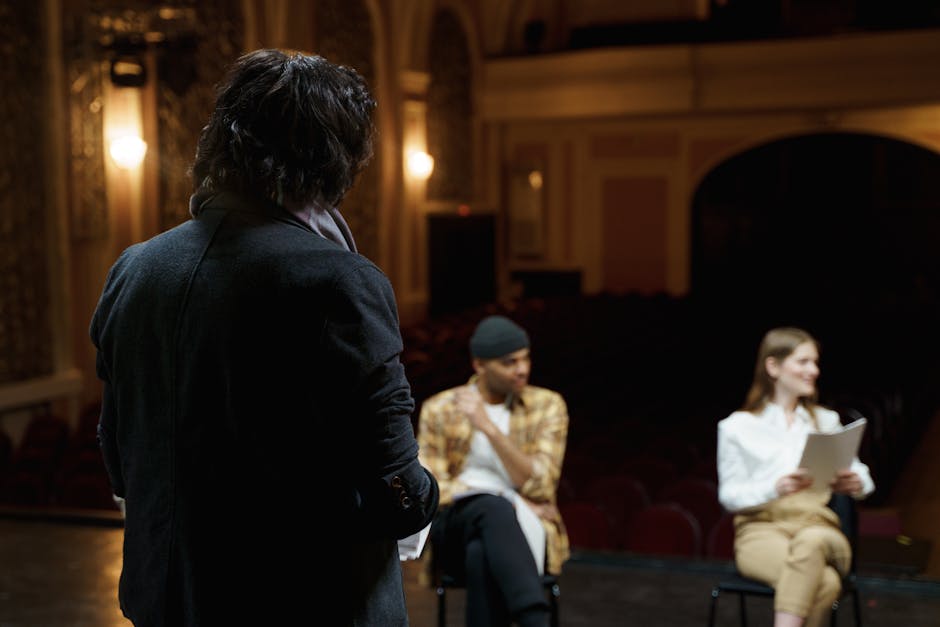Political theater stands as a testament to the enduring power of performance to challenge, reflect, and inspire. From ancient Greece to modern stages, it has been a medium for societal critique and change. As we look at its journey, we see how it continues to adapt and resonate with contemporary issues, engaging audiences in meaningful dialogue.
Historical Roots of Political Theater
Political theater traces its roots back to ancient Greece, where playwrights like Aristophanes and Sophocles used satire and societal critique. These writers dared to poke fun at politicians and question norms, leaving audiences entertained while pondering deeper messages. Aristophanes' "Lysistrata" boldly critiqued war and political leadership.
Centuries later, Shakespeare's history plays explored monarchy and ambition, laying groundwork for future political stories. The 20th century saw political theater take on an even stronger voice. Bertolt Brecht's epic theater aimed to engage audiences intellectually rather than emotionally. In the U.S., groups like the Living Theatre and Free Southern Theater pushed boundaries, using performance as activism during the civil rights era.
Today, political performance art continues evolving. Augusto Boal's Theater of the Oppressed engages audiences as active participants. Contemporary performers often blend traditional theater with modern techniques to address complex issues, inviting reflection and action. The journey of political theater remains dynamic, rooted in tradition yet responsive to the present.
The Role of Verbatim and Documentary Theater
Verbatim and documentary theater present reality through direct quotations from interviews, speeches, court transcripts, and conversations. This genre strips away dramatization to offer audiences unvarnished truth, creating tension between stark facts and empathetic response.
The power of verbatim theater lies in transforming passive observation into active awareness. It asks audiences to find their place within civic existence through detailed accounts from real individuals. This fosters connection and recognition, sparking civic discourse.
Anna Deavere Smith exemplifies this approach, capturing real people's words to address social issues. Her plays like "Fires in the Mirror" and "Twilight: Los Angeles, 1992" examine race and identity in America, inviting direct engagement with these topics.
In an era of misinformation, verbatim theater offers authentic exploration of truth and deception. It restores agency to participants, reclaiming stories from soundbites and encouraging audiences to look beyond easy assumptions. This form of theater doesn't just tell stories; it transforms them into calls for awareness and accountability.
The Intersection of Performance and Activism
Performance art and activism intersect to challenge norms and spark critical conversations. Artists use unconventional spaces and strategies to provoke reflection and societal transformation.
- Ai Weiwei's installations critique issues like censorship and human rights abuses. His "Remembering" piece, made of 9,000 backpacks, mourned victims of the Sichuan earthquake while criticizing government negligence.
- Marina Abramović's "The Artist is Present" transformed spectators into participants, encouraging empathy as a form of political action.
- Pussy Riot's guerrilla performances protest autocratic governance and inequality, their art inseparable from their activism.
- Eve Ensler's "The Vagina Monologues" exemplifies how performance can act as both a micro and macro tool for activism, addressing women's experiences globally and sparking a worldwide movement.
Through this blend of art and activism, artists foster urgency and agency, encouraging societies to question the status quo and push for change. Performance art serves as both a mirror reflecting truths and a conduit for transformation.
Challenges and Criticisms of Political Theater
Political theater faces challenges in balancing authenticity and representation. Practitioners must faithfully represent marginalized voices without oversimplification or appropriation. There's a risk of perpetuating stereotypes or presenting flattened views of complex issues.
Directors and writers must balance clarity and nuance, fostering critical discourse while avoiding simplistic resolutions. The potential for audience misinterpretation requires creative anticipation and experiences that promote post-show dialogue.
Funding and censorship pose operational hurdles. Politically charged productions may not align with commercial objectives, demanding innovative funding approaches. Practitioners must navigate potential censorship while ensuring free expression.
To address these challenges, political theater often incorporates:
- Interactive elements
- Post-show discussions
- Multimedia materials
By leveraging interdisciplinary collaboration, it remains resilient and relevant as an agent of change.

The Future of Political Theater
Political theater's future intersects with advancing technology, shifting political climates, and artistic expression. Virtual and augmented reality technologies offer immersive experiences, potentially deepening emotional connections to stories and issues.
Online streaming and social media provide platforms for global reach, while the intimacy of live performance remains irreplaceable. As political landscapes evolve, theater adapts to reflect public conscience on issues like authoritarianism, climate change, and social justice.
The call for authenticity emphasizes elevating underrepresented voices and diverse perspectives. Future productions are likely to forge paths of inclusivity, catalyzing change through a spectrum of stories from overlooked communities.
Political theater is poised to blend the tactile with the digital, the real with the virtual, and the traditional with the experimental. Its future lies in adapting to new challenges while maintaining its power to foster reflection and activism.
Political theater remains a vital force for change, continually adapting to reflect the pressing issues of our time. It invites us to engage with its stories, encouraging reflection and action, ensuring its place as a powerful tool for societal transformation.
- Boal A. Theatre of the Oppressed. Pluto Press; 2000.
- Smith AD. Fires in the Mirror: Crown Heights, Brooklyn, and Other Identities. Anchor; 1993.
- Brecht B. Brecht on Theatre: The Development of an Aesthetic. Hill and Wang; 1964.
- Ensler E. The Vagina Monologues. Villard; 1998.





















